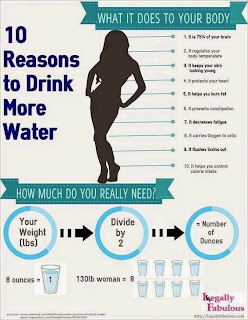How to lower BMI
Maintaining a healthy body weight looks attractive and can prevent future health problems. The body mass index, or BMI, is one way to measure the proportion of your height and weight. To check your BMI click here. Body mass index, also called BMI, is a calculation of a correlation between a person’s height and weight that categorizes him or her as underweight, of normal weight, overweight or obese, assuming a normal body composition. Underweight is considered a BMI of 18.4 or lower. A BMI of normal weight is any number between 18.5 and 24.9. The overweight range is between 25 and 29.9, with anything above that being considered obese. Maintaining a low BMI is important for normal health, growth and functioning of your body.
This chart is a great way to see where your range is.
So the steps that you can take to lower your BMI-
Increase your exercise, get aerobic exercise most days of the week. Get at least 30 minutes of daily exercise to start, but build up to longer exercise sessions to see greater results. Choose activities that raise your heart rate, such as jogging, brisk walking, swimming or fast biking. Learn to embrace the idea of exercising. Make your exercise routine a bit more fun. Change it up every 30 days, if you do the same exercises and routines, every day you will become bored. Once you are bored, you are more apt to quit or put less effort into the workouts.
Weight training why? Many people do not connect resistance training with losing weight, but in fact it is an effective strategy for lowering your BMI. The reason weightlifting or resistance exercises help burn fat is because they help you build muscle, which burns more calories than fat. So, the more muscle you have, the more efficient your body will be at burning calories.
Burn Intervals-HIIT, may be just what you're looking for. HIIT is a training method commonly used by college and professional athletes to help build muscle, increase endurance and lower overall body fat levels. This is a great way to lower your BMI as well.
Next is to take a look at what your eating, .Eliminate empty calories, such as sugary beverages, candy and fast foods. Eat a lot of fruits, vegetables, whole grains, lean meat, fish and poultry and low-fat sources of dairy. Reduce portion sizes and stick to eating 5-6 smaller meals a day. That's one of the reasons I love shakeology because so many times we cut calories wanting to loss weight but in return we end up cutting our nutrition shakeology gives you all the nutrition equal to making six salads and eating them but without all the calories. Also add spices into your diet, spices can help give your foods that extra punch and help keep you from feeling as deprived. Make a meal plan and stick to it!!
WATER!! A minimum you need to be drinking half of your body weight in oz. The University of Maryland Medical Center recommends drinking water to help with weight loss because it flushes out the kidneys and may prevent excess weight due to water retention.
So depending on where you are in your weight loss journey you may be just starting and just the fact that you our out walking for 30 minutes a day is awesome and your starting to read labels and see what your putting in your body. Or maybe you have been at this for a while and your very close to that "average range" so small tweaking here and their is going to be key for you with doing weights 2-3 days a week and adding in HIIT to your weekly work out. Also taking note of everything you eat in a day is so helpful I know for me I can hardly remember what I had for breakfast so how can I remember if I ate enough or had to much as the day goes on. What ever you find to do make sure its bringing you closer to your goals rather then farther away. It's a life style of being healthy not a quick sprint to the finish line.





No comments:
Post a Comment